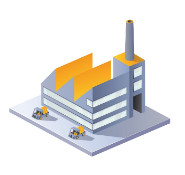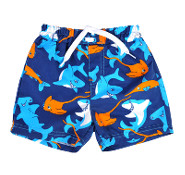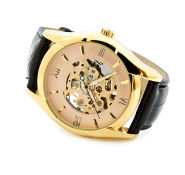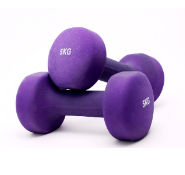
Electronic cigarettes are one of the few products that could be considered a “home grown” product in China. Since the first units rolled off the assembly lines in Shenzhen about 10 years ago, the electronic cigarettes have presented itself as a serious alternative to smokers – that still want to take a puff now and then.
However, e-cigarettes are still a topic of high level controversy, and regulations are still on the drawing board in both the US and EU. The product is also lethal – if not manufactured according to the relevant safety standards. Keep reading and we explain why.
Electronic Cigarette Manufacturers in China
There’s only one place in the world to go if you’re looking for electronics, the Guangdong province. Roughly 87% of the Electronic cigarette manufacturers listed on Alibaba.com are based here. Of these, the majority is based in Shenzhen, a city bordering Hong Kong. But there are also quite a few suppliers located in Dongguan, Huizhou and Zhongshan – all of which are also based in Guangdong province.
The industry jump started in 2010 and 2011 – when hundreds of new suppliers starting manufacturing and trading (that’s two different things) electronic cigarettes. This was before most western government had yet reacted to the influx of this, still controversial, product. I’ll get to that in a bit.
A lot of suppliers caught on this trend and started trading electronic cigarettes, rather than manufacturing the product themselves. If you browse a site like Alibaba, you’ll quickly notice that most suppliers are mere traders, with very little registered capital (ranging from RMB 30,000 to 100,000). Stay away from these suppliers. They can’t offer a better price. They can rarely offer smaller volumes – and certainly not smaller volumes of electronic cigarettes that are compliant with EU and US product certification standards. What they can offer is an extra, non-transparent, layer – between you and the actual manufacturer. A manufacturer you know nothing about.
Components and Product Specifications
There’s no universal definition of “good quality”. Instead, you need to know what defines good quality. As with every product, there are certain features and parameters that defines the quality standard of an electronic cigarette. To begin with, there are 4 main categories of electronic cigarettes:
- Rechargeable Electronic Cigarettes
- Disposable Electronic Cigarettes (Non-Rechargeable)
- E-Go Electronic Cigarettes
- Personal Vaporizers
Product specifications vary between the different types of electronic cigarettes. For example, you don’t need to bother with E-liquid cartridges if you’re purchasing Disposable Electronic Cigarettes. But there are still a number of common quality factors that buyers should take into consideration when selecting a product:
- Cartridge Puffs: 200 – 500
- Cartridge Capacity: 1.X ml
- Child-proof spring switch: Yes / No
- Body material:
- Mouthpiece material:
- LED: Yes / No
- Charger type: USB
- Battery Capacity: XXX mAh
- Weight: XXg
- Working voltage: 3.X – 3.X V
Battery
Most suppliers can offer batteries of different capacities. It’s a critical component, since the number of “puffs” is limited not only by the E-liquid, but also the battery capacity. The relation between the battery capacity and the number of “puffs” is something like this:
- 650mah: 600-650 puffs
- 900mah: 800-850 puffs
- 1100mah:1000-1050 puffs
There’s also a limit to the battery life. However, the battery shall be rechargeable at least 300 times.
Charger
Most suppliers offer both USB chargers and Power socket chargers. I’d go for the USB charger. The voltage in a power socket is much higher than the voltage in a USB socket (around 5 V). An overloaded power socket charger can cause personal injury and outbreak of fire. I’ve seen it happen. On the other hand, an overcharged USB is likely to result in little more than a voltage drop or cut. That won’t kill anyone or burn down a house.
E-liquids
The E-liquid, or E-juice, is the “active substance” in the electronic cigarettes and usually contains the following:
- Propylene glycol
- Vegetable glycerin
- Nicotine
- Flavorings
However, there’s no set standard of what substances E-liquid shall contain, not to mention the content of each substance. This is also a current topic of debate among regulators around the world, particularly in the European Union and United States.
Regulations and legal status
In the United States, the Food and Drug Administration (FDA) is currently working on regulations. Electronic cigarettes were initially classified as a drug delivery device, and therefore regulated by the Food, Drug, and Cosmetic Act (FDCA). However, it was later reclassified as a tobacco product. Currently, it’s possible to import and sell the product in the United States.
Future regulations will likely require importers to declare and label the chemical content in the . It’s also likely that third party testing will become mandatory.
In the European Union, the legal situation is more fragmented. So far, there’s no EU wide product safety standard that applies specifically to electronic cigarettes. However, EU states have implemented their own regulations. As of today, it’s legal to import and sell electronic cigarettes and liquids with nicotine in the following EU countries:
- United Kingdom
- Germany
- Italy
- Poland
- Ireland
- Latvia
- Lithuania
Still, electronic cigarettes are still a topic of debate and further regulations are to be expected. This post could be outdated two weeks from now, so make sure you read up on the current regulations before you import electronic cigarettes or e-liquids from China.
In Australia, electronic cigarettes are regulated on a state level. Recently, Western Australia banned imports and sales of electronic cigarettes of all kinds. While imports are still legal for personal use, Australian importers better stay away from electronic cigarettes altogether.
Product Certification Requirements
Even though regulations specifically for electronic cigarettes are still on the drawing board, in both Europe and America, that is not saying that product certification standards don’t apply to the hardware. Electronic cigarettes are subject to certification standards regulating electronic products. These include the following:
European Union
- RoHS (Assembled product & individual components)
- CE (Assembled product & individual components)
- REACH (Mouthpiece & plastic case)
United States
- CPSC (Assembled product & individual components)
- FHSA (Mouthpiece & plastic case)
Notice that chargers and batteries are also required to be compliant with the relevant standard, not only the e-cigarette itself. The Chinese supplier should be able to show previous test reports and product certificates for the product unit, battery and charger. Also make sure to verify the authenticity of any test report or certificate provided by a supplier. There are plenty of fakes out there.
There are several reported cases of e-cigarettes exploding and catching fire. Keep in mind the importer is always held responsible, in case a product causes personal injury or property damage. Ensuring product certification compliance is always critical when importing from China.





















Happy new year. I am Kevin, working in one of the largest E-cigs manufacturer. Freemax is one of our most famous brand. Now we have just established a new company named Autopod, for disposable and pod system electronic vaporizer product. We can send you samples and quotations if you are also keen working with us. https://autopod2020.en.made-in-china.com/ This is our product website.
Looking forward working with you.
Best regards,
Autopod Kevin
Since e-cigs are considered contraband, and most companies (DHL) will not ship these products.
Do you have recommendations in finding brokers/forwarders that can successfully deliver the goods without marking the invoice as something else other than what the product is?
We are having issues finding these contacts
(Getting it out of china)